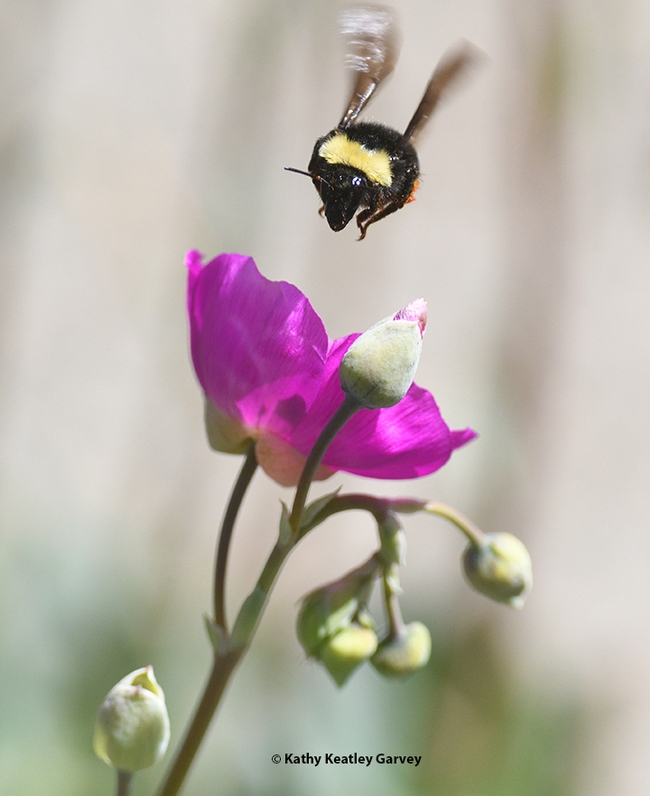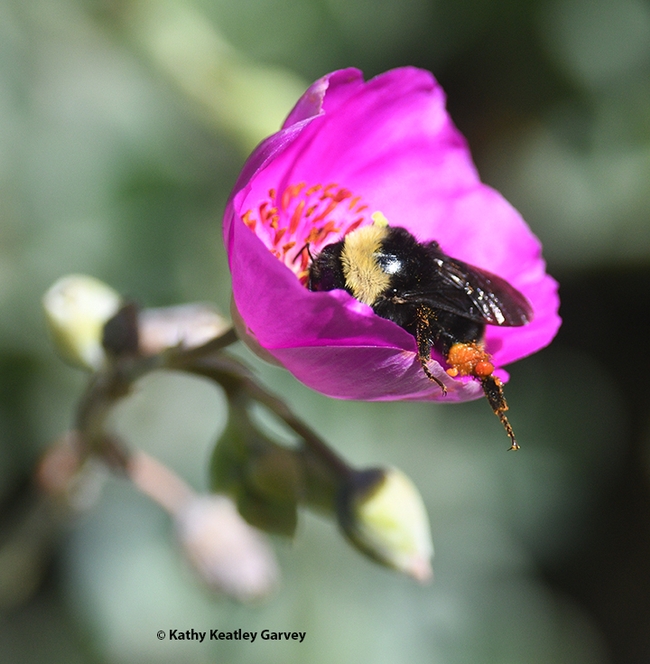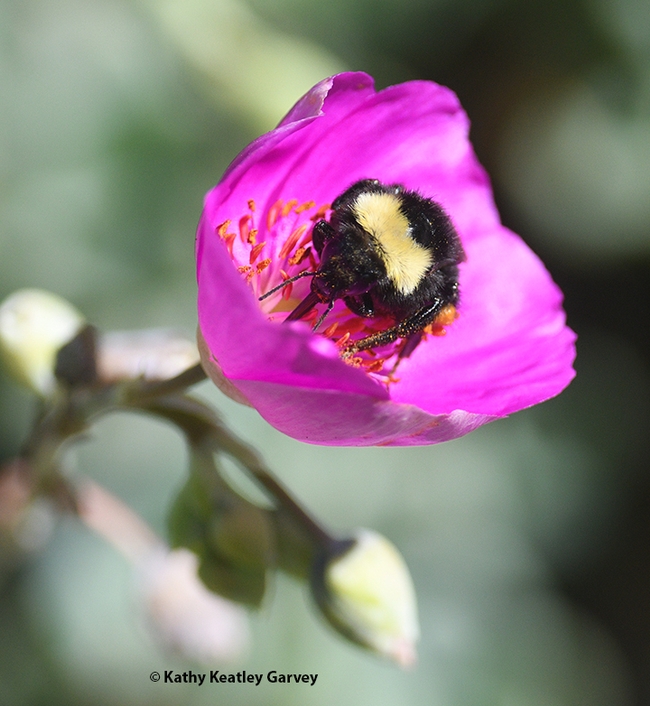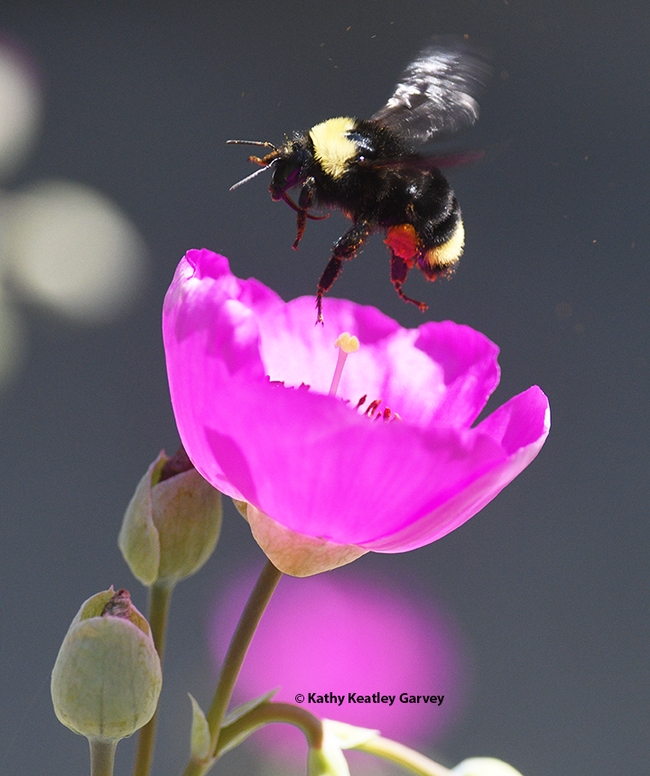We miss the late Robbin Thorp, 1933-2019, distinguished emeritus professor of entomology at UC Davis, who co-authored Bumble Bees of North America: an Identification Guide (Princeton University Press, 2014).
He loved to share his expertise on bumble bees, which originated more than 100 million years ago. But their distribution and diversity are not well known, he used to tell us.
Bumble bees are just one of the some 20,000 species of bees that populate the world. Of that number, however, only about 250 species are bumble bees, and they all belong to the genus Bombus.
Some 46 different species of bumble bees reside in North America, north of Mexico, Thorp related for a Bug Squad blog posted on July 10, 2014.
In their book, lead author Paul Williams and co-authors Thorp, Leif Richardson and Sheila Colla published information about bumble bees and their history, plant favorites, distribution maps, up-to-date taxonomy, and extensive keys to identify the many color patterns of the species.
They list sites to spot bumble bees:
- farms and gardens with a diversity of flowering crops and herbs
- hay fields
- roadside ditches
- windbreaks with good abundance and diversity of “weedy” flowering plants, such as clovers and vetches
- wetlands and wet meadows
- hardwood forests
- mountain meadows, and
- urban parks and gardens
The primary species found in Yolo County, Thorp related, are:
- Yellow-faced bumble bee, now known as the Vosnesensky bumble bee, Bombus vosnesenskii
- Yellow bumble bee, Bombus californicus, now known as Bombus fervidus
- Black-tailed bumble bee, Bombus melanopygus, formerly known as Bombus edwardsii. This is the first to fly in the winter and spring.
- Crotch bumble bee, Bombus crotchii, a short-tongued species
- Van Dyke bumble bee, Bombus vandykei, a medium long-tongued species
Lately we've been observing B. vosnesenskii, and B. fervidus, B. melanopygus in our pollinator garden in Vacaville, Solano County.
Currently, B. fervidus favors the rock purslane, Calandrina grandiflora. What a joy to see!
Attached Images:

Bombus fervidus, formerly known as B. californicus, makes a beeline for a rock purslane in a Vacaville garden. (Photo by Kathy Keatley Garvey)

Bombus fervidus cradles itself in a rock purslane in a Vacaville garden. (Photo by Kathy Keatley Garvey)

The bumble bee's proboscis is easily seen in this image. This is Bombus fervidus foraging on a rock purslane. (Photo by Kathy Keatley Garvey)

Bombus fervidus exits a rock purslane. (Photo by Kathy Keatley Garvey)